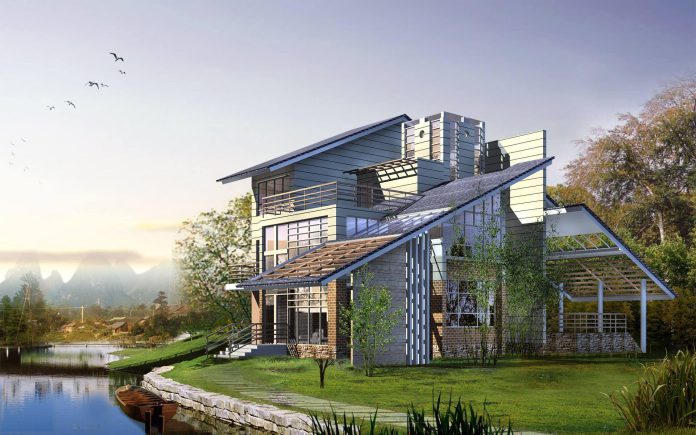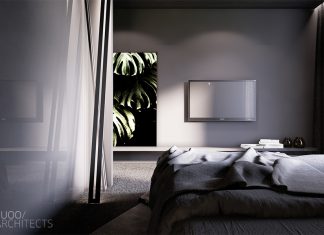As the world moves into the future, homes are evolving at a rapid pace, driven by technological advancements, sustainability imperatives, and changing lifestyle preferences. The traditional concept of homes as static structures is giving way to dynamic spaces that integrate seamlessly with everyone’s needs and the environment. Therefore, several key trends are set to define the future of homes. These trends encompass sustainable living practices, the integration of smart home technologies, the flexibility of living spaces, and a focus on wellness-oriented design principles. Innovations in construction materials and techniques further contribute to creating more efficient and durable residential environments.
1. Sustainable Living: Integration of Eco-Friendly Technologies
The future of homes revolves around sustainability, with a growing emphasis on reducing carbon footprints and embracing eco-friendly practices. Solar panels, once a niche feature, are becoming mainstream as homeowners seek to harness renewable energy. Additionally, advancements in smart home technology enable efficient energy management through automated systems that monitor and optimize energy usage. Many Colorado architects and those in the surrounding areas are exploring ways to integrate homes with natural surroundings, incorporating materials and construction techniques that minimize environmental impact. These innovations not only promote sustainability but also contribute to lowering long-term operational costs for homeowners. Moreover, integrating passive solar design principles further enhances energy efficiency by maximizing natural heating and cooling opportunities.
2. Smart Homes: The Rise of Connected Living
The concept of smart homes continues to evolve, with AI-powered assistants and IoT devices becoming integral parts of daily life. From controlling lights and thermostats remotely to managing security systems via smartphones, homeowners are increasingly reliant on interconnected technologies. The future promises even more integration, with homes anticipated to meet occupants’ needs through predictive analytics and adaptive learning algorithms. This interconnectedness not only enhances convenience but also improves energy efficiency and home security, making smart homes a cornerstone of modern living. Moreover, advancements in voice recognition technology are further enhancing the user experience by enabling hands-free control of various home functions. As these technologies become more sophisticated, they are poised to revolutionize how homeowners interact with their living spaces daily.
3. Flexible Spaces: Adapting to Changing Needs
The traditional layout of homes is undergoing a significant transformation to accommodate flexible living arrangements. Spaces that can serve multiple purposes are becoming increasingly desirable, reflecting the evolving dynamics of work-from-home scenarios and varied family structures. Design innovations such as movable walls, modular furniture, and convertible rooms enable homeowners to customize their living spaces according to immediate needs. This adaptability not only enhances functionality but also future-proofs homes against changing lifestyle trends. In addition, the integration of digital nomad-friendly features like dedicated home offices and versatile communal areas further supports the demand for flexible living environments. These changes are driven by a desire for spaces that can seamlessly adapt to the diverse and evolving needs of modern families.
4. Wellness-Oriented Design: Prioritizing Health and Comfort
The importance of health and well-being is influencing home design, with an emphasis on creating environments that promote physical and mental wellness. Biophilic design principles, which integrate natural elements like light, greenery, and natural materials, are gaining prominence. Additionally, features such as air purification systems, ergonomic furniture, and spaces designed for relaxation and mindfulness are becoming standard inclusions. Homes are increasingly seen as sanctuaries that support holistic health, catering to the well-being of their occupants. Furthermore, the incorporation of noise reduction technologies and layouts that enhance natural airflow contribute to creating peaceful and rejuvenating living spaces. Innovations like circadian lighting systems are also being integrated to mimic natural daylight cycles, which can positively impact mood and overall well-being.
Conclusion
The future of homes promises to be both innovative and transformative. From sustainable practices that reduce environmental impact to interconnected technologies that enhance convenience and security, the evolution of residential spaces is responding to the needs and aspirations of modern living. Flexible layouts and wellness-oriented designs further underscore a shift towards personalized and holistic living environments. With architects leading the charge in integrating these trends into residential designs, the future of homes is poised to be functional, efficient, and deeply enriching for those who inhabit them. As technology continues to advance and societal preferences evolve, homes will increasingly serve as reflections of various values, priorities, and aspirations for a better tomorrow.















